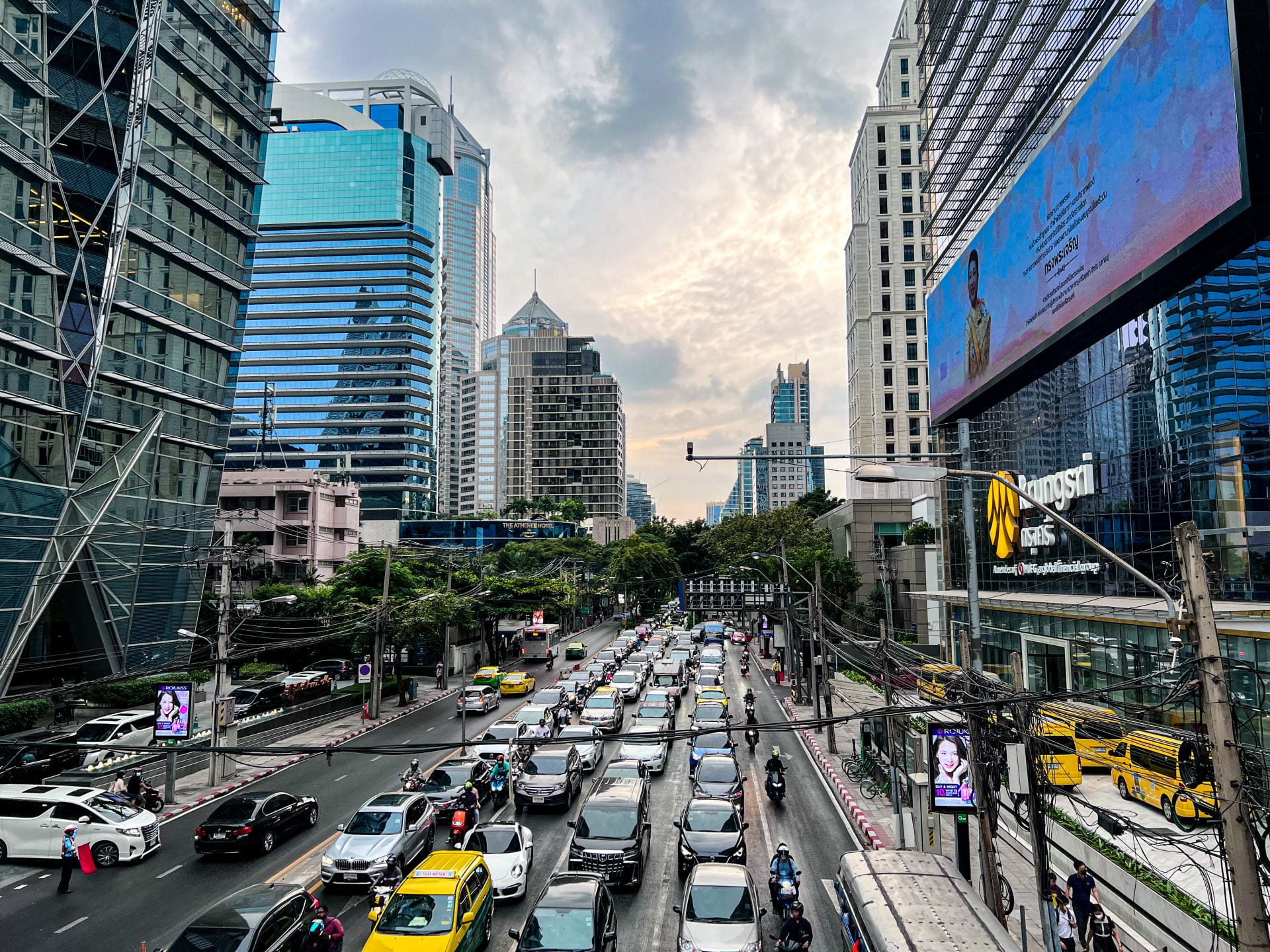Introduction
Four days into an overseas experience in Bangkok, Thailand, and already, I’ve been struck by some of the stark differences and similarities between here and my home country, New Zealand. Here are a few from first impressions.
Differences
An Overflow of Information
One of the first things I noticed upon arriving in Thailand was the sheer amount of marketing and advertising everywhere. Big, grey highways, a muted sky, and bright bursts of colour from giant screens either side of every place you go. It’s a stark contrast to NZ, where marketing is much more subtle. In Thailand, the same advertisements will also appear repeatedly next to each other. Why am I seeing a sunshine-yellow ad of a man grinning with a pack of chips five million times all at once? Ads are all throughout the train stations, where you’re probably focused on getting where you want to go rather than your immediate surroundings, meaning it all enters your brain subliminally. It’s a clever way for companies to get their message across and potentially make a sale, and not as prominent in New Zealand.
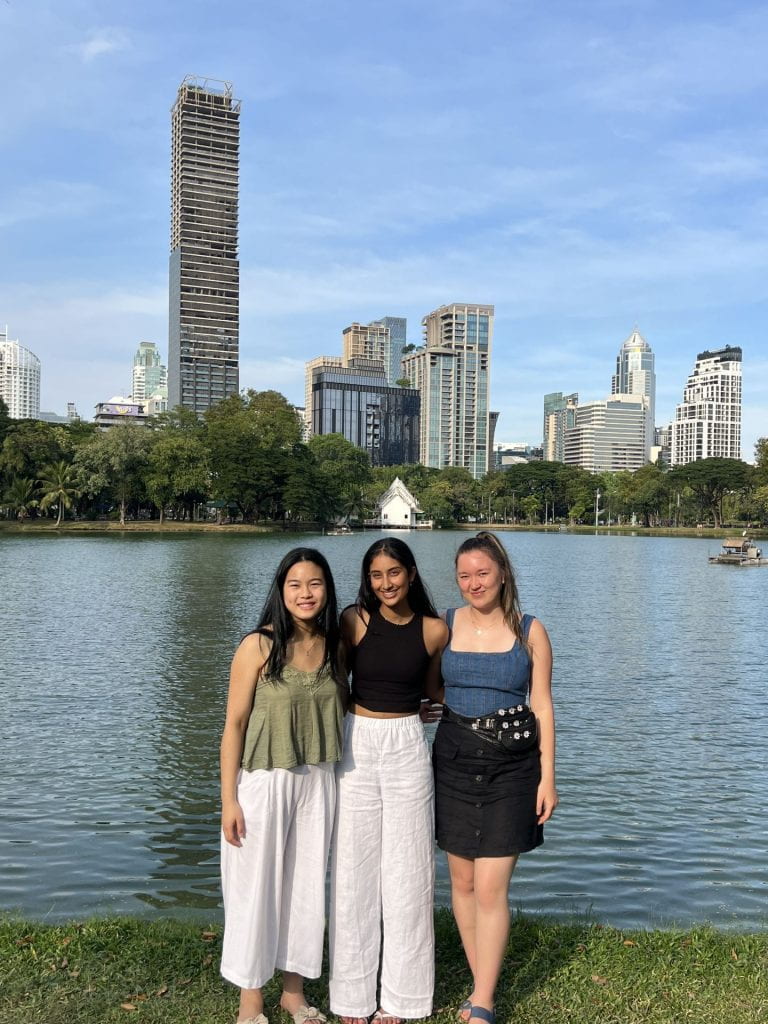
The Affordable Side
Many people know Thailand for its cheap prices! Indeed, it is exciting to have more purchasing power here. For example, we hired a van for the whole day as a group, and it cost only 3000 baht (about 15 NZD per person). You can buy a good pair of shoes for less than 20 NZD and clothing for 10 NZD a piece. Services are particularly cheap here, with a one hour massage being only 350 baht (16 NZD) or less. Overall, the prices are crazy low!
However, that’s not all there is to it; many times, you may pay a premium. For example, there are multinational chains all around with similar prices to home (Starbucks are *everywhere*). A morning drink from an aesthetic cafe may still cost 5 or 6 NZD, or a pair of shoes from your favourite sports brand 150 NZD. It’s mainly local Thai cuisine and products that are very cheap, emphasising the importance of being willing to try new things and adapt to the Thai lifestyle.
A Window into the World
A significant difference is in the standard of living and housing. Coming from a country with a relatively high cost of living, it’s eye-opening seeing how people in Thailand live with much less in terms of material possessions. In poorer areas, homes are more like shacks than houses. Pet dogs look like strays. Every country has its own set of economic and social conditions, which have a big impact on the standard of living for its citizens. However, while Thailand may have lower living standards compared to New Zealand, I’ve been struck by how fulfilled and positive many people here seem to be, despite having fewer resources. Perhaps not being exposed to a more lavish lifestyle means that one doesn’t feel the need for it, being content with what they know.
Approaches to Sustainability
In NZ, we tend to hate plastic and avoid products with even a drop of palm oil. On the other hand, in Thailand, everything is liberally wrapped in plastic. My eyes bulged seeing palm oil on sale for 65 baht (3 NZD) a litre on the supermarket shelves. While visiting Koh Kret, an island in the Chao Phraya River known for its pottery-making and handicrafts, the rivers were swamped with waste. The lack of bins around the city practically encourages littering.
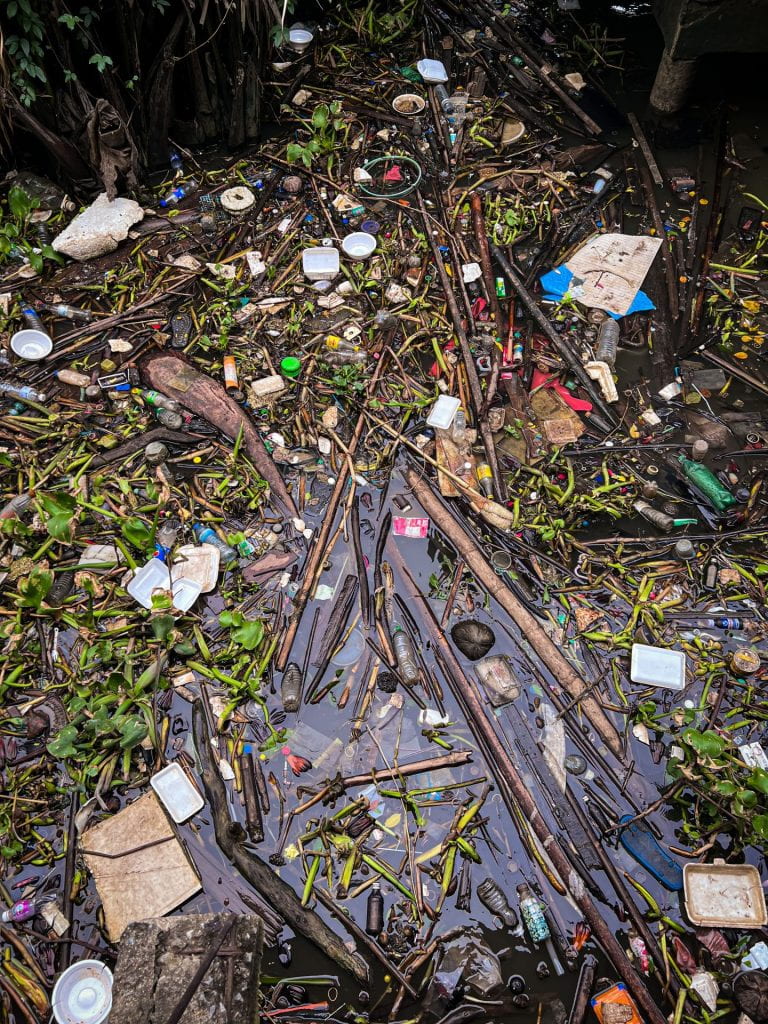
That being said, one aspect of Thai culture that was a bit of a surprise at first was the toilets. When I first arrived, I was bewildered by the “bum gun” or toilet hose provided in every bathroom. After trying it out, I realised it’s actually a more eco-friendly method than toilet paper.
However, it’s still quite a surprise to see the difference in attitudes to the environment by society, especially between Kiwi and Thai consumers.
Navigating the Congested Bangkok Streets
Thailand’s traffic customs are quite different. People travel by cars, tuk tuks or motorcycles, and their driving is crazy! It freaked me out when my Grab driver was driving in two lanes for a hundred metres or so coming off the motorway. Giving way to pedestrians is another non-existent concept here. Vehicles *will* run you over. Certain areas even have human traffic lights: men in orange vests who signal when pedestrians and cars should each go. Robot traffic lights hold marginal power over people. Pedestrian crossings are also scarce. Yesterday, I bolted across a big intersection as five lanes worth of cars came speeding along to reach a bus, fearing for my life. It will definitely take some getting used to!
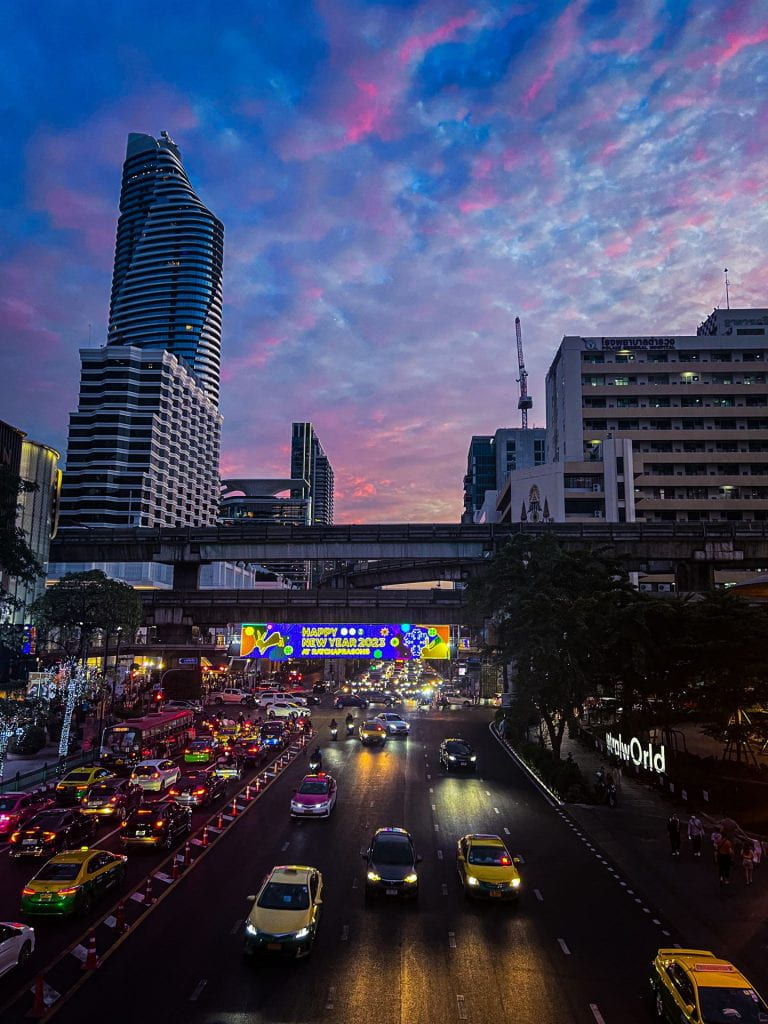
Similarities
The Significance of Greenery
An intriguing correlation is the role of greenery as a symbol of wealth and development in both countries. For example, the new Westfield Newmarket mall in New Zealand has a plethora of plants and greenery embellishing the food court and rooftop dining areas. It lends the mall an air of environmental consciousness, making it more appealing to modern consumers (especially compared to the old Newmarket Westfield).
Similarly, in the Pathum Wan district, where my internship is, the animated metropolis is juxtaposed with lush greenery that lines the streets. Amidst the gleaming skyscrapers, trees and foliage flourish, showcasing the harmony between urban development and nature preservation. This adds to the aesthetics of the area while also making it feel healthier, fresher, and cleaner, which is especially significant considering the prevalent pollution in Thailand. Perhaps, it just happens to be that way. However, it also seems that greenery used in contemporary design can contribute to a sense of prosperity and progress for both countries.
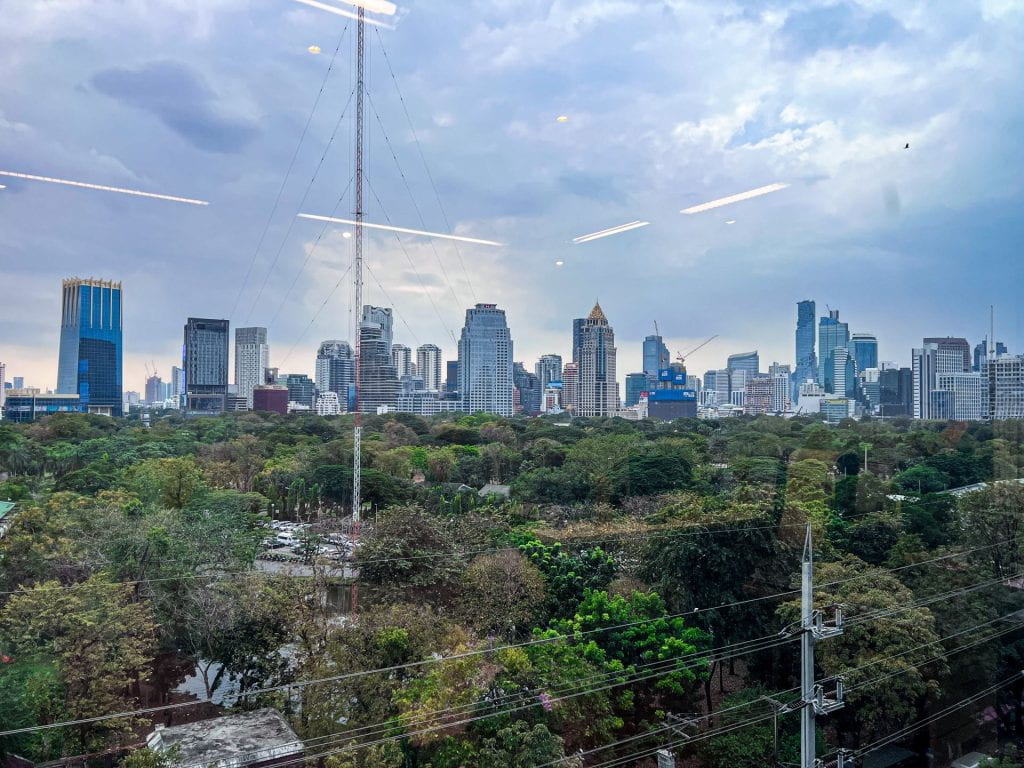
Technology in Modern Life
One thing that has been a constant in both Thailand and New Zealand is the convenience of apps like Grab (Thailand’s Uber equivalent). It’s incredible how technology is able to bridge cultural and geographic divides; convenience has become a universal cornerstone of modernisation.
It has also provided a sense of comfort and familiarity. Yesterday, I wanted to travel to Koh Kret island over 20km away, about a 2 hour commute. Navigating my way through the bustling Bangkok streets, bussing, getting lost, confused, and almost run over to reach the island, I knew all along I could always get back home with the tap of a button.
With night about to fall, a long, wonderful day coming to an end, it felt safer and easier to catch a Grab. The sun set, streaks of fiery red and orange smeared across the sky out the window, as my driver dropped me to my doorstep. Perhaps in a country where the living standards feel vastly different, it’s the little things that serve as reminders of home.
Conclusion
My experience in Thailand so far has been eye-opening and enriching. I’m grateful for the opportunity to experience a new culture and way of life. With all these differences between Bangkok and NZ, it’s interesting how there’s not really one correct way of doing things – only what you are used to and what you are not. Challenge always accompanies change, but I’m looking forward to adapting more and more to the Bangkok lifestyle.
